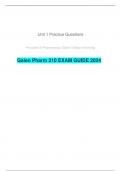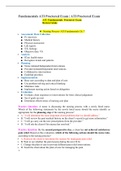Resume
Summary Chapter 9_ Laboratory Diagnosis
- Cours
- Établissement
Concise, easy to grasp overview. Information needed to understand the module present in high level English grammar . Contains method of telling which does not require a prior reading of chapter from book. Well understood by first-time readers or for pre-exam revision. Well detailed summary of chapt...
[Montrer plus]












